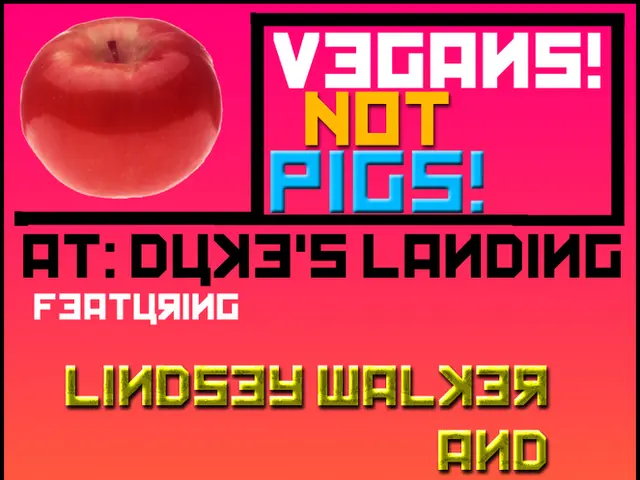Ongoing Project Progress Update, Phase 3 Construction
Let's Talk About Online Troublemakers and How Dribbble's Kicking 'Em Out
Welcome back to the lowdown on Dribbble, where we spill the beans on the decisions we make that affect our users, whether it's good news or bad.
When it comes to websites that accept user-generated content, it's like a magnet for scammers, jerks, and other online pain-in-the-asses. Dribbble is no exception - we've gotta deal with a whole heap of low-quality content that distracts from the real deal, the exciting design work that's meant to inspire you.
Low-quality content, for the record, is any User-Generated Content that breaches our Terms of Service and Community Guidelines.
To keep this low-quality content off our site, we've beefed up our moderation team and tightened our moderation policies. Here's what our heroic moderators are checking:
- Every user before their designs can show up in search results and feeds.
- Every design published by every user.
- Every message sent by one user to another.
And, in a move that'll make you cheer louder than a Super Bowl win, they're also auditing previously published designs and giving them the ol' heave-ho if they don't comply with our policies. Any bad actors they catch will be shown the door for good - that's right, one strike, you're out.
In this post, I'll give you a sneak peek at some of their efforts. Our moderators are zeroing in on two specific types of low-quality content:
- Designs that aren't actual designs 🎨👎
- Messages that aren't helpful for the recipient 💔👎
Designs that aren't actual designs 🎨👎
Users should only publish actual designs (for more details, check out this Help Center article), but we often find designs that don't pass muster. Dumb stuff like this negatively impacts search relevance, which, as we shared previously, is key to our strategy.
For example, some users publish designs advertising job openings. While finding earning opportunities is our mission, the right place to post a job opening is our Job Board. When you're searching for "mobile UI design", you expect to see real designs, not companies looking for mobile UI/UX designers.
Other users publish designs advertising a product they're selling or earning affiliate commissions from, like an online course. We're cool with advertisers, but the best way to advertise a product is to either boost the design (click "promote this design" from the uploader or edit screen, read more here) or run a managed advertising campaign.
Now, this isn't about money - it's about keeping the user experience top-notch:
- Ads are clearly labeled so you know right away which designs aren't actual designs.
- Our search algorithm limits the number of ads in a set of results, keeping you from being overwhelmed.
- We check every ad to ensure quality and keep low-quality, spammy ads off your feed.
In cases like these, which aren't that serious, we'll remove the design but keep the user (as long as we think they posted it in good faith and meant to add value to the community).
However, there's also spammy content that promotes products, services, or websites unrelated to design, which warrants a user suspension. Some examples:
There are also designs that are egregious violations of our Terms of Service (like advertising pirated movies) which results in a user suspension as well as any accounts associated with that user.
Since we've stepped up our efforts to eliminate designs that aren't actual designs:
1) The number of user applications that moderators reject has skyrocketed (July rejections increased 525% Y/Y):
Just remember, until a user's application is approved, their designs are hidden from search and feeds, so that application review process is a crucial first line of defense. Also, the increase in rejections isn't solely due to more stringent moderation; it also reflects a substantial increase in designer applications in recent months.
2) The number of designs that moderators have removed has also surged (July suspensions increased 415% Y/Y):
This graph doesn't include designs that come down when a user is suspended, just specific designs that were suspended without the user being suspended.
Messages that aren't helpful for the recipient 💔👎
Our moderators are also keeping a close eye on messages between users.
Messaging doesn't need to be a work inquiry (though most are), but the message must be helpful in some way for the recipient. To make sure low-quality messages don't reach you, our moderators review every message.
Unfortunately, some messages are just unintelligible or test messages - not spam, but just not useful for the recipient:
- "Hi, Nice to meet you. I am looking for someone who can collaborate with me."
- "I hope this project gives me an internship"
- "Hi, I like your work, can you invite me?"
In these examples, the sender didn't necessarily violate our Terms of Service or Community Guidelines, but their message adds nothing to the recipient. At worst, these messages demoralize the recipient and make them less likely to check their messages - which means they might miss important messages from potential clients. While we don't suspend users in this scenario, our moderators may give them a temporary timeout from messaging.
On the other hand, some messages are clearly spam - the sender sends the same message to hundreds or thousands of users (usually pitching a service like SEO):
- "Hi, How are you doing? I need the services of a graphic designer for a project. I have a budget of $1,800, please let me know if you're interested."
- "Hi, How are you doing? I want to discuss the project on Skype or WhatsApp."
- "Dear friend! Please contact me for an important project. discussions must be through WhatsApp."
These senders are definitely up to no good - moderators will reject the messages and suspend the senders.
Since we've stepped up our efforts to intercept low-quality messages:
1) The percentage of messages marked as spam by the recipient or deleted (an indicator of low value) has dropped Y/Y:
The spam rate has decreased Y/Y, despite explosive Y/Y growth in the number of messages received (messages that were reviewed by moderators and delivered to the intended recipient):
This is primarily because our moderators are catching low-quality messages before they hit your inbox:
Lastly, across the moderation efforts described above, our moderators also discredited and suspended thousands of users (a 77% Y/Y increase in July) who intentionally violated our Terms of Service or Community Guidelines.
To wrap up, we expect this renewed focus on moderation to improve the quality-to-noise ratio on Dribbble and help maximize the number of users browsing, interacting, and transacting through the site.
Our users can support these moderation efforts by reporting any low-quality content by using the "Report" feature in the bottom left-hand corner of the design page, flagging any users who aren't complying with the Community Guidelines by using the "Report [username]" feature on the user's profile page, or reporting low-quality messages by using the "Report message" feature in their inbox.
Enrichment Data:Dribbble, a popular platform for designers to share their work, along with other user-generated content, has specific guidelines to ensure that all shared content is acceptable, avoiding suspension or rejection. Though the specific rules may not be obvious in the search results, here's a quick rundown of some common guidelines to follow on platforms such as Dribbble for user-generated content:
- Originality and Ownership:
- Ensuring that the content you post is original, and that you have the rights to share it.
- Avoiding posting content that is not yours or that infringes on someone else's intellectual property.
- Community Standards:
- Being respectful and considerate of other users' feedback and comments.
- Avoiding posting inappropriate or offensive content.
- Content Focus:
- Dribbble is primarily focused on design work, so ensure that your posts are relevant to the design community.
- Concentrate on posting design-related content, such as sketches, mockups, or finished designs.
- Spam and Self-Promotion:
- Preventing excessive self-promotion or spamming the community with repetitive posts.
- Focusing on sharing your design work rather than advertising.
- Engagement:
- Encouraging engagement by responding to comments and participating in discussions.
- fostering a positive and supportive community by providing constructive criticism.
To avoid suspension or rejection on Dribbble or similar platforms, it's crucial to follow these guidelines and maintain respectful and engaging interactions within the community. Always consult the official guidelines and community rules of Dribbble for the most accurate information.
Technology plays a crucial role in Dribbble's efforts to maintain a high-quality platform. By leveraging social-media features like user messaging and design publishing, Dribbble moderators can track and manage content that breaches their Terms of Service and Community Guidelines, ensuring an optimal entertainment experience for all users.
Moreover, technology aids in enforcing penalties for repeat offenders by banning them from the platform, making Dribbble a safer space for designers to share and view authentic design work in the realm of entertainment.








